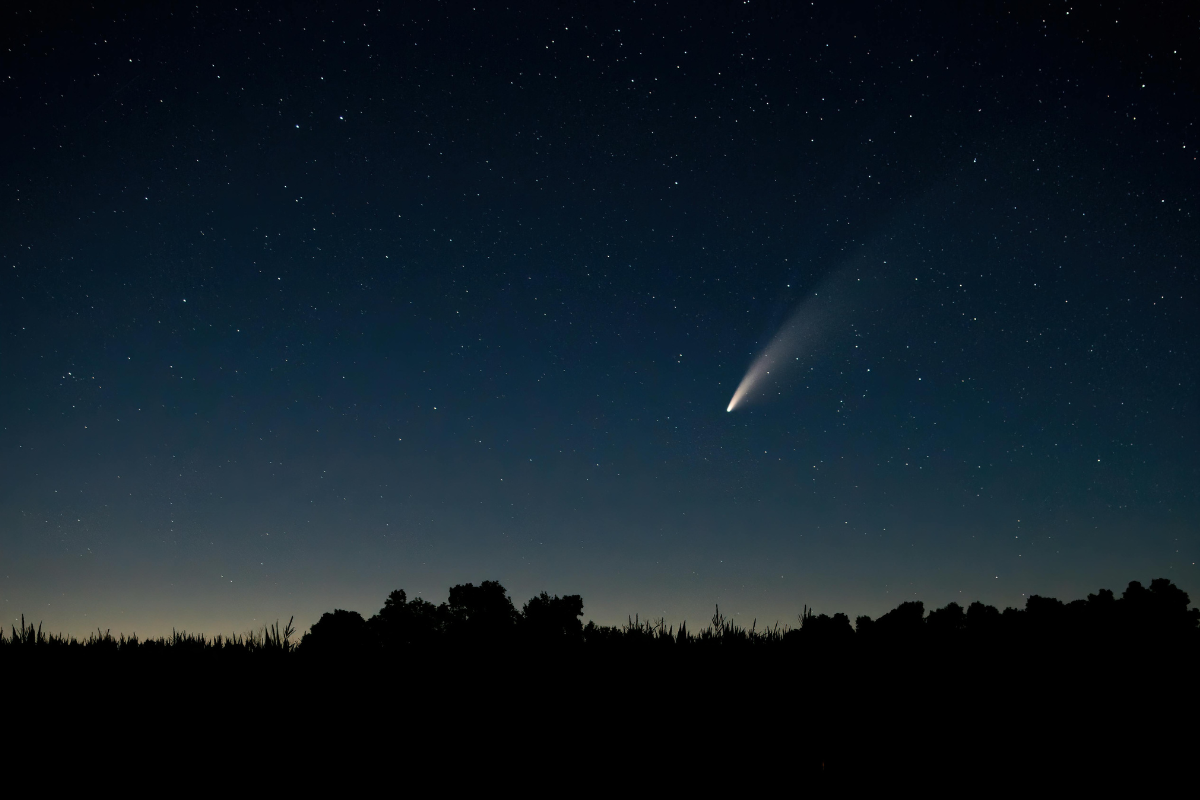Science
TikTok Users Claim 3I/ATLAS Comet is an Alien Craft

The interstellar comet 3I/ATLAS is set to reach its closest approach to the Sun, or perihelion, on October 30, 2025. This event has sparked a wave of excitement on social media, particularly TikTok, where users are sharing videos they claim show the comet as a potential alien spacecraft. Hashtags like #3IATLAS and #AlienSpacecraft have gained traction, as millions of users engage with content that mixes speculation with scientific observation.
The phenomenon began gaining traction in late September 2025 when amateur astronomers began posting videos of the night sky, suggesting that they had captured 3I/ATLAS in action. One particularly popular clip, which has amassed over 5 million views, claims to reveal “leaked actual footage” showing a large vessel and links it to NASA’s planetary defense network. Skeptics argue that the purported images often depict nothing more than lens flares or conventional aircraft.
Scientific Observations Amid Viral Claims
Despite the viral excitement, established scientific organizations are providing a more grounded perspective on 3I/ATLAS. The comet was first identified on July 1, 2025, by the ATLAS telescope in Río Hurtado, Chile. Its hyperbolic trajectory confirms its extrasolar origin, marking it as the third recognized interstellar object after 1I/ʻOumuamua and 2I/Borisov.
Preliminary observations from June 2025 indicated a nucleus diameter ranging between 440 meters and 5.6 kilometers, encased in a dust cocoon that was imaged by the Hubble Space Telescope on July 21, 2025. Further analysis from the James Webb Space Telescope on August 6 revealed the presence of carbon dioxide (87 percent), carbon monoxide (9 percent), and water (4 percent) in the comet’s gas plume, consistent with behaviors observed in other comets.
Astronomers from the European Space Agency (ESA) also conducted observations from 30 million kilometers away as part of their ongoing study of the comet. These findings suggest that 3I/ATLAS is a natural comet, not an engineered object.
Debate Over Anomalies and Theories
Harvard astrophysicist Avi Loeb has suggested that certain anomalies in the comet’s behavior warrant further investigation. He has rated its potential for technological origin at 4 out of 10, citing unusual emissions and a peculiar trajectory that appears to be influenced by gravitational interactions with planets such as Mars and Venus. Loeb has called for NASA to release high-resolution images of 3I/ATLAS, stating, “The politics of the day should not sabotage science. They have the data. They should share it with scientists.”
Despite these claims, many astronomers remain skeptical. They emphasize that the comet’s coma—a cloud of vaporized ices surrounding it—along with its glittering tail, strongly indicates that it is a natural celestial body. This view is supported by data from the Keck Observatory, which highlighted a unique 594-kilometer feature on the comet, yet reinforced the notion that the comet is indeed a natural formation.
As the debate continues, the captivating spectacle of 3I/ATLAS raises questions about the intersection of social media, scientific inquiry, and public fascination with the unknown. While some users on TikTok eagerly share their interpretations and theories, scientists are focused on unraveling the true nature of this interstellar visitor, offering insights into the cosmos that are grounded in empirical evidence.
-

 Health3 months ago
Health3 months agoNeurologist Warns Excessive Use of Supplements Can Harm Brain
-

 Health3 months ago
Health3 months agoFiona Phillips’ Husband Shares Heartfelt Update on Her Alzheimer’s Journey
-

 Science1 month ago
Science1 month agoBrian Cox Addresses Claims of Alien Probe in 3I/ATLAS Discovery
-

 Science1 month ago
Science1 month agoNASA Investigates Unusual Comet 3I/ATLAS; New Findings Emerge
-

 Science4 weeks ago
Science4 weeks agoScientists Examine 3I/ATLAS: Alien Artifact or Cosmic Oddity?
-

 Science4 weeks ago
Science4 weeks agoNASA Investigates Speedy Object 3I/ATLAS, Sparking Speculation
-

 Entertainment4 months ago
Entertainment4 months agoKerry Katona Discusses Future Baby Plans and Brian McFadden’s Wedding
-

 Entertainment4 months ago
Entertainment4 months agoEmmerdale Faces Tension as Dylan and April’s Lives Hang in the Balance
-

 World3 months ago
World3 months agoCole Palmer’s Cryptic Message to Kobbie Mainoo Following Loan Talks
-

 Science4 weeks ago
Science4 weeks agoNASA Scientists Explore Origins of 3I/ATLAS, a Fast-Moving Visitor
-

 Entertainment4 months ago
Entertainment4 months agoLove Island Star Toni Laite’s Mother Expresses Disappointment Over Coupling Decision
-

 Entertainment3 months ago
Entertainment3 months agoMajor Cast Changes at Coronation Street: Exits and Returns in 2025









